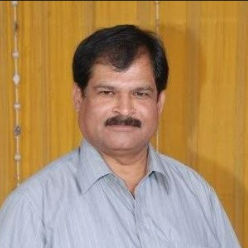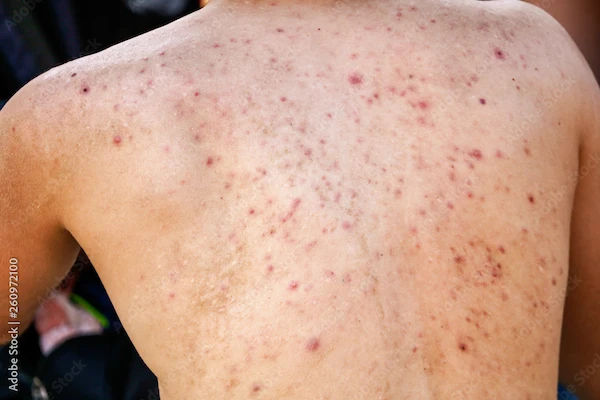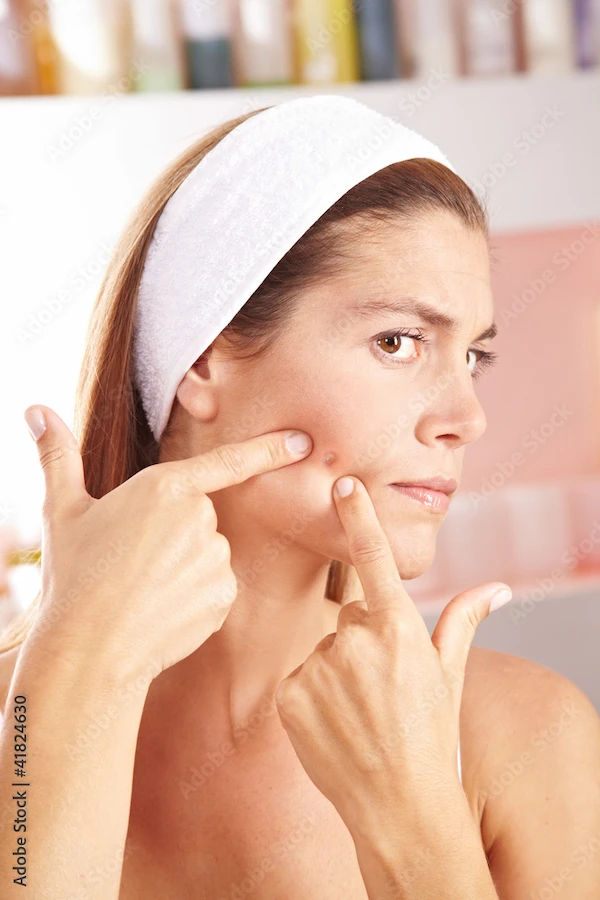How to Get Rid of Forehead Acne?
Learn how to prevent and treat forehead acne. Discover effective tips for clearer, healthier skin.

Written by Dr Shreya Sarkar
Last updated on 3rd Jul, 2025
Acne is a common skin condition that affects people of all ages, but it can be particularly frustrating when it appears on the forehead. This area is often visible and can impact self-esteem and confidence. In this blog, we will explore what forehead acne is, its causes, prevention strategies, treatment options, and when to seek professional help. By the end, you will have a better understanding of how to manage forehead acne effectively.
What is Forehead Acne?
Forehead acne is a type of acne that appears on the forehead, which is part of the T-zone of the face, along with the nose and chin. Acne can manifest in various forms, including pimples, cysts, blackheads, and whiteheads. While acne can occur anywhere on the body, the forehead is a common area due to its unique characteristics.
The skin on the forehead contains a high concentration of sebaceous (oil) glands, which can lead to excess oil production. This oil, combined with dead skin cells and bacteria, can clog pores and result in acne.
Causes of Forehead Acne
Several factors contribute to the development of forehead acne. Here are some of the most common causes:
1. Hormonal Fluctuations
Hormonal changes are one of the leading causes of acne, particularly in teenagers and young adults. During puberty, the body produces more hormones, leading to increased oil production. Women may also experience forehead acne due to hormonal fluctuations related to their menstrual cycle, pregnancy, or conditions like polycystic ovary syndrome (PCOS).
2. Excess Oil Production
The forehead is home to many sebaceous glands, which produce oil to keep the skin moisturised. However, when these glands become overactive, they can produce too much oil, leading to clogged pores.
3. Poor Hygiene and Skin Care Habits
Maintaining a proper skincare routine is essential for preventing forehead acne. Failing to cleanse the skin regularly can lead to a buildup of dirt, oil, and dead skin cells, which can clog pores. Additionally, using harsh products that irritate the skin can worsen acne.
4. Hair Products and Accessories
Hair products such as gels, oils, and sprays can contribute to forehead acne. When these products come into contact with the skin, they can clog pores and lead to breakouts.
5. Diet and Lifestyle Factors
What you eat can impact your skin health. Diets high in sugar and dairy have been linked to increased acne in some individuals. Additionally, stress can trigger hormonal changes that lead to breakouts. Finding ways to manage stress and maintain a balanced diet can help improve skin health.
Prevention Strategies
Preventing forehead acne involves adopting good skincare and lifestyle habits. Here are some effective strategies:
1. Skincare Routine Recommendations
Establishing a consistent skincare routine is crucial for preventing forehead acne. Here are some steps to follow:
Cleansing: Use a gentle cleanser twice a day to remove dirt, oil, and makeup. Look for products that are non-comedogenic, and suitable for your skin
type.Exfoliating: Exfoliation helps remove dead skin cells that can clog pores. Use a mild exfoliant 1–2 times a week, but avoid over-exfoliating, as this can irritate the skin.
Moisturising: Even if you have oily skin, it's essential to moisturise. Choose an oil-free, lightweight moisturiser to keep your skin hydrated without adding excess oil.
2. Hair Care Tips
Be mindful of the hair products you use and how they may affect your skin. Here are some tips:
Choose Non-Comedogenic Products: Opt for hair products that are labelled as non-comedogenic to reduce the risk of clogged pores.
Keep Hair Clean: Regularly wash your hair to remove excess oil and product build-up. This is especially important if you have long hair that touches your forehead.
Avoid Tight Accessories: If you wear headbands or hats, choose loose-fitting options that allow your skin to breathe.
3. Lifestyle Modifications
Making some lifestyle changes can also help prevent forehead acne:
Manage Stress: Practice stress-reducing techniques such as yoga, meditation, or deep breathing exercises. Regular physical activity can also help reduce stress levels.
Eat a Balanced Diet: Incorporate plenty of fruits, vegetables, whole grains, and lean proteins into your diet. Limit sugary and processed foods, as they may contribute to acne.
Treatment Options
If you already have forehead acne, there are several treatment options available to help manage it:
1. Over-the-Counter Treatments
Many effective over-the-counter treatments can help reduce forehead acne. Look for products containing active ingredients such as:
Benzoyl Peroxide: This ingredient helps kill acne-causing bacteria and reduce inflammation. It is available in various forms, including gels, creams, and cleansers.
Salicylic Acid: Salicylic acid works by exfoliating the skin and unclogging pores. It is particularly effective for treating blackheads and whiteheads.
Alpha Hydroxy Acids (AHAs): AHAs help to exfoliate the skin's surface, promoting cell turnover and preventing clogged pores.
2. Prescription Medications
If over-the-counter treatments are not effective, a dermatologist may prescribe stronger medications, including:
Topical Retinoids: These vitamin A derivatives help to unclog pores and reduce inflammation. They are often used for more severe cases of acne.
Antibiotics: Oral or topical antibiotics can help reduce bacteria on the skin and decrease inflammation.
Hormonal Treatments: For women, hormonal therapies such as birth control pills can help regulate hormones and reduce acne.
3. Professional Treatments
For persistent or severe forehead acne, professional treatments may be necessary. Options include:
Chemical Peels: A dermatologist can perform chemical peels to exfoliate the skin deeply, helping to clear acne and improve skin texture.
Laser Therapy: Laser treatments can target acne-causing bacteria and reduce oil production in the skin.
4. Home Remedies
Some individuals may find relief from forehead acne using natural remedies. While these may not work for everyone, they can be worth trying:
Tea Tree Oil: Known for its antibacterial properties, tea tree oil can be applied topically to help reduce acne.
Aloe Vera: Aloe vera has soothing and anti-inflammatory properties, making it a good option for calming irritated skin.
Honey: Honey has natural antibacterial properties and can be used as a mask to help soothe and hydrate the skin.
When to See a Dermatologist?
While many cases of forehead acne can be managed at home, there are times when it is essential to seek professional help. Consider seeing a dermatologist if:
The acne is severe or persistent, despite trying over-the-counter treatments.
You experience painful cysts or nodules.
Acne is causing significant emotional distress or affecting your quality of life.
You suspect that hormonal imbalances may be contributing to your acne.
During a dermatology consultation, the dermatologist will assess your skin, discuss your medical history, and recommend a personalised treatment plan tailored to your needs.
Conclusion
Forehead acne can be a frustrating condition, but understanding its causes and implementing effective prevention and treatment strategies can help you manage it successfully. By establishing a consistent skincare routine, making mindful lifestyle choices, and seeking professional help when necessary, you can reduce the occurrence of forehead acne and improve your skin's overall health. Remember, everyone's skin is different, and what works for one person may not work for another. It's essential to be patient and give your skin time to respond to treatments.
Consult Top Dermatologist
Consult Top Dermatologist

Dr Usha B K
Dermatologist
4 Years • MBBS,MD (Dermatology, Venereology & Leprosy), DNB (Dermatology, Venereology & Leprosy), Fellowship in Trichology
Bangalore
Apollo 24|7 Clinic - Karnataka, Bangalore
(50+ Patients)

Dr Ritika Shanmugam
Dermatologist
9 Years • MBBS, MD (Dermatology, venereology, Leprosy)
Bangalore
Apollo 24|7 Clinic - Karnataka, Bangalore

Dr. Hemalatha Naidu M
Dermatologist
5 Years • MBBS, MD (Dermatology)
Bangalore
Apollo 24|7 Clinic - Karnataka, Bangalore
(250+ Patients)

Dr. Gnaneshwar Chidella
Dermatologist
35 Years • MBBS, MD (VENEREOLOGY), Diploma in (VENEREOLOGY)
Hyderabad
Sri Venkateshwara Poly Clinic & diagnostics, Hyderabad

Dr. Himabindu Mamidala
Dermatologist
11 Years • MBBS, DDVL
Hyderabad
DrHIMABINDUS SKIN CLINIC AND LASER CENTRE, Hyderabad



.webp)